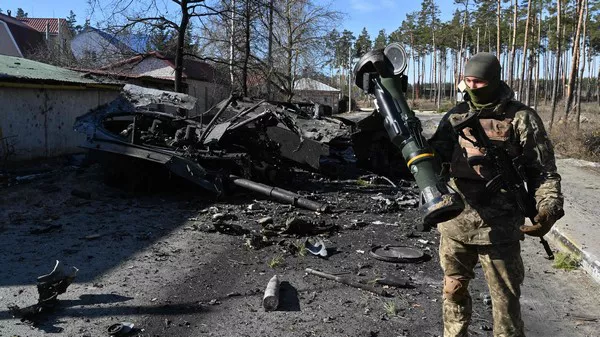As the conflict between Russia and Ukraine enters its third year, the battlefield remains largely static, with a 900-mile front line witnessing limited success for both Russian and Ukrainian forces attempting to break through fortified positions.
This static situation reflects systemic failures on the part of the Russian military, according to experts.
Pavel Luzin, a Russian military analyst and visiting scholar at the Fletcher School of Law and Diplomacy, asserts that Russia’s decision to initiate the war was fundamentally flawed. “The biggest mistake was to start this war,” Luzin said, emphasizing the lack of strategic success for Russia.
“The battlefield situation is a testament to systemic failure,” Luzin added. “Russia could not win this war at all. No chances. Nothing to fix… Everything is wrong: Russia’s strategy, Russia’s ideology, decision-making process, education system, etcetera.”
Over the past two years, Russia’s war effort has become increasingly costly, brutal, and less ambitious. Despite ongoing devastation along the front line, the goal of achieving total victory has been abandoned. According to David Petraeus, former CIA director and four-star general, Russia’s army has been unable to secure victory.
“There have been incremental achievements, if you will, at an incredible cost,” Petraeus remarked.
Russia’s Top 5 Blunders in Two Years of Ukraine War
1. The Kyiv Convoy Failure
Russia’s attempt to seize Kyiv, Ukraine’s capital, ended in a costly failure. The operation, which aimed to capture the Hostomel Airport in Kyiv’s suburbs, relied on a 40-mile convoy stretching from Belarus. However, logistical challenges proved insurmountable, and the convoy became emblematic of Russia’s tactical overreach.
The Associated Press described the failure to take Kyiv as “a defeat for the ages.” Despite initial advances and brutalization of civilians in suburbs like Bucha and Irpin, Russian forces were unable to sustain their campaign due to logistical difficulties and effective Ukrainian resistance.
2. Humiliation at Sea
Russia’s naval forces also suffered humiliating losses, particularly in the Black Sea. Initial plans for amphibious landings around Odesa came to naught, and the sinking of the Black Sea Fleet’s flagship, the guided-missile cruiser Moskva, by Ukrainian anti-ship missiles marked a significant setback.
The loss of the Moskva, along with multiple other warships, highlighted Russia’s inability to protect its naval assets in the Black Sea. Ukrainian forces, armed with anti-ship missiles and naval drones, exploited weaknesses in Russia’s defenses, inflicting heavy losses.
3. ‘Goodwill Gestures’
Russia’s retreats from key strategic positions, including Kyiv and Kherson, were spun as “goodwill gestures” by the Kremlin. However, these withdrawals were seen as tactical defeats rather than gestures of conciliation by many observers.
The successive defeats in Kyiv, Kharkiv, and Kherson undermined Russia’s narrative of military prowess and highlighted the resilience of Ukrainian forces.
4. Putin’s Chef
The rise and fall of Yevgeny Prigozhin, an influential oligarch known as “Putin’s chef,” underscored the complex power dynamics within the Kremlin. Prigozhin’s leadership of the Wagner Group, a mercenary organization, initially bolstered his influence, but his eventual rebellion and demise weakened Putin’s grip on power.
Prigozhin’s assassination, allegedly orchestrated by U.S. intelligence, exposed vulnerabilities within Russia’s security apparatus and dealt a blow to Putin’s legitimacy.
5. ‘What Air Defense Doing?’
As the conflict progressed, Ukraine’s development of long-range strike capabilities exposed weaknesses in Russia’s air defense systems. Memes mocking Russia’s ineffective air defenses became commonplace on social media, highlighting the failure to counter Ukrainian drone attacks effectively.
Overall, Russia’s missteps in the Ukraine war have exposed systemic weaknesses and strategic miscalculations, undermining its military objectives and diminishing its international standing.


























